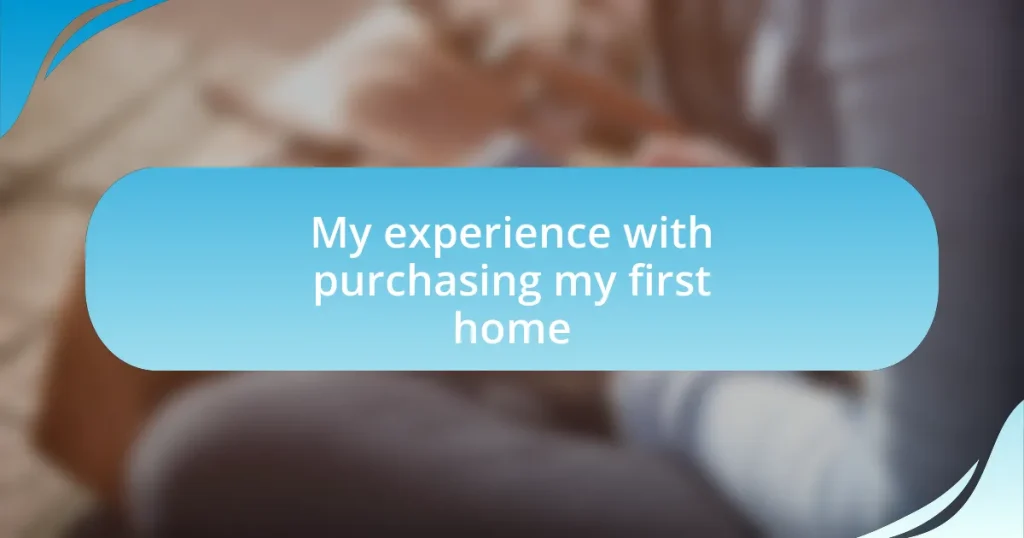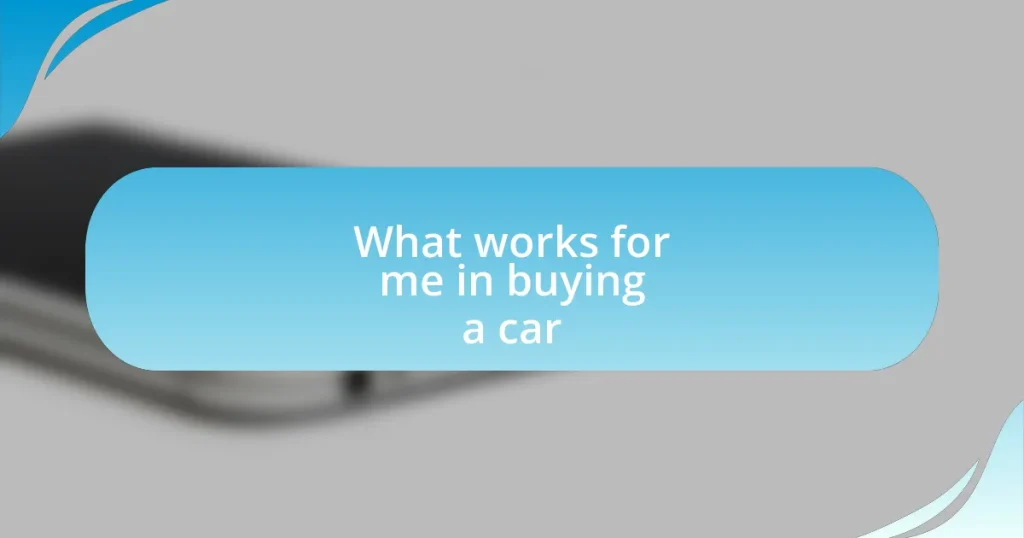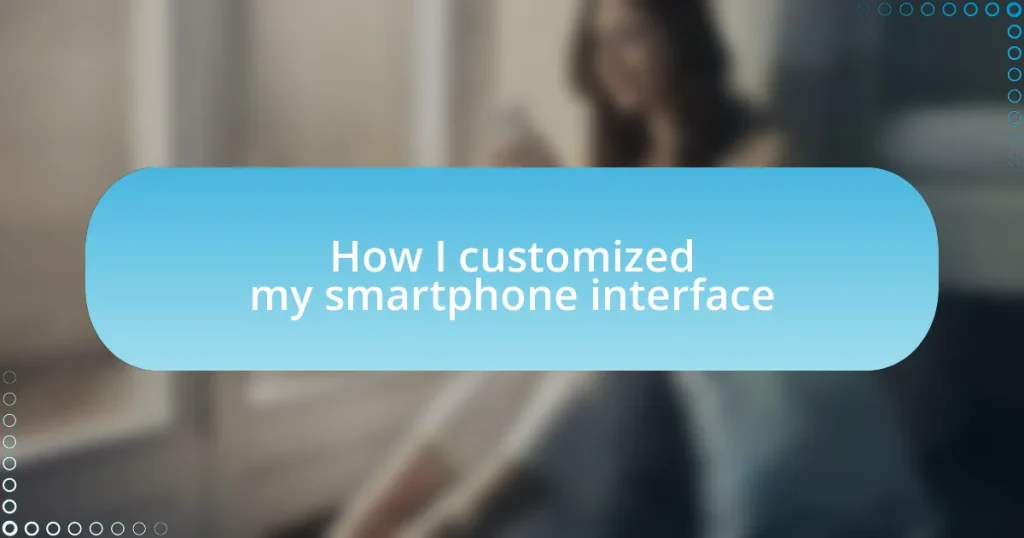Key takeaways:
- Understanding the home buying process involves managing emotions and prioritizing needs; defining non-negotiable features helps in making informed decisions.
- Setting a realistic budget is crucial, considering income, monthly expenses, hidden costs, and mortgage options to avoid financial pitfalls.
- Researching the housing market and exploring different types of homes enhances understanding of pricing and personal preferences, aiding in confident decision-making.
- Making an effective offer requires strategy, personalization, and an understanding of market conditions, along with a willingness to negotiate terms that appeal to the seller.
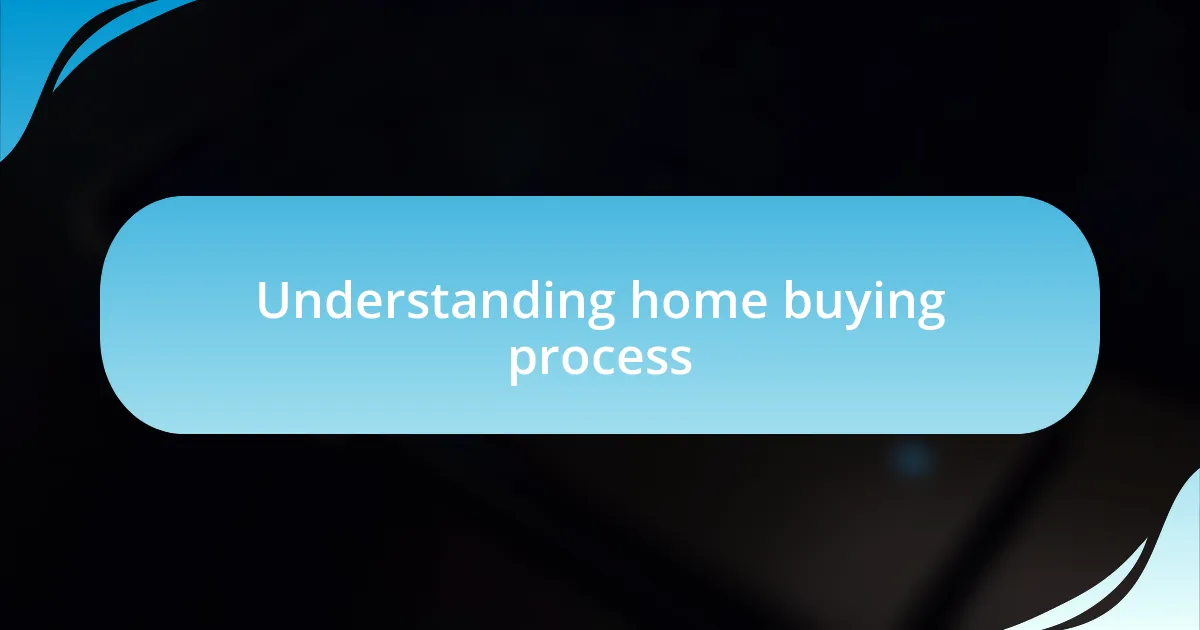
Understanding home buying process
The home buying process can feel daunting at first, but breaking it down into manageable steps makes it much more approachable. I remember when I first dipped my toes in this journey; I felt both exhilarated and terrified. Was I really ready to make such a significant commitment? The answer, I discovered, lies in understanding each stage—from getting pre-approved for a mortgage to closing the deal.
As I navigated through selecting a real estate agent, I realized that having someone knowledgeable on my side was crucial. My agent guided me through countless listings, but what really stood out was how she helped me define what I truly wanted in a home. This reflection process made me question: what features were non-negotiable for me? It’s essential to recognize your priorities, as they will serve as a compass throughout the process.
Then comes the joy of house hunting, but it’s easy to become overwhelmed. I vividly recall stepping into a property that ticked all the boxes, yet I hesitated; did the energy of the space resonate with me? These moments highlight an essential lesson: buying a home isn’t just about the physical attributes—it’s about how the place makes you feel. Understanding this emotional connection can guide you to make the right choice, ensuring your first home is not only a financial investment but a personal sanctuary as well.
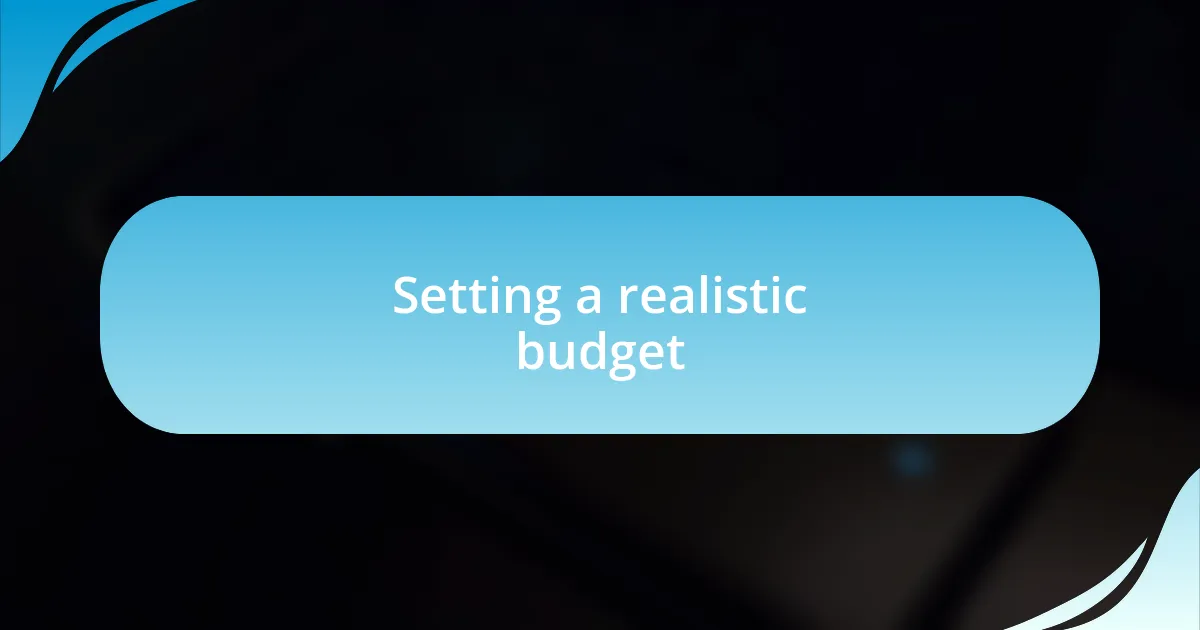
Setting a realistic budget
Setting a realistic budget is one of the most vital steps in the home buying journey. When I started this process, I recall sitting down with a spreadsheet, feeling a mix of excitement and anxiety as I calculated my finances. It was clear to me that a well-planned budget would not only help me avoid financial pitfalls but also ensure that I could comfortably afford my new home without sacrificing my lifestyle.
To create a budget that’s truly reflective of your situation, consider the following factors:
- Income: Calculate your total household income and any additional sources.
- Monthly Expenses: List all existing obligations, such as utilities, groceries, and subscriptions.
- Down Payment: Determine how much you can allocate towards your down payment without draining your savings.
- Mortgage Options: Research different mortgage rates and terms to identify what fits your budget best.
- Hidden Costs: Don’t forget about closing costs, inspections, and ongoing maintenance.
I still remember the moment I realized how crucial it was to factor in those hidden costs. A friend of mine had to dip into her savings after moving in because she hadn’t anticipated the expense of repairs. That insight stayed with me, and I made sure to account for every possible cost, leading to a smoother transition into homeownership.
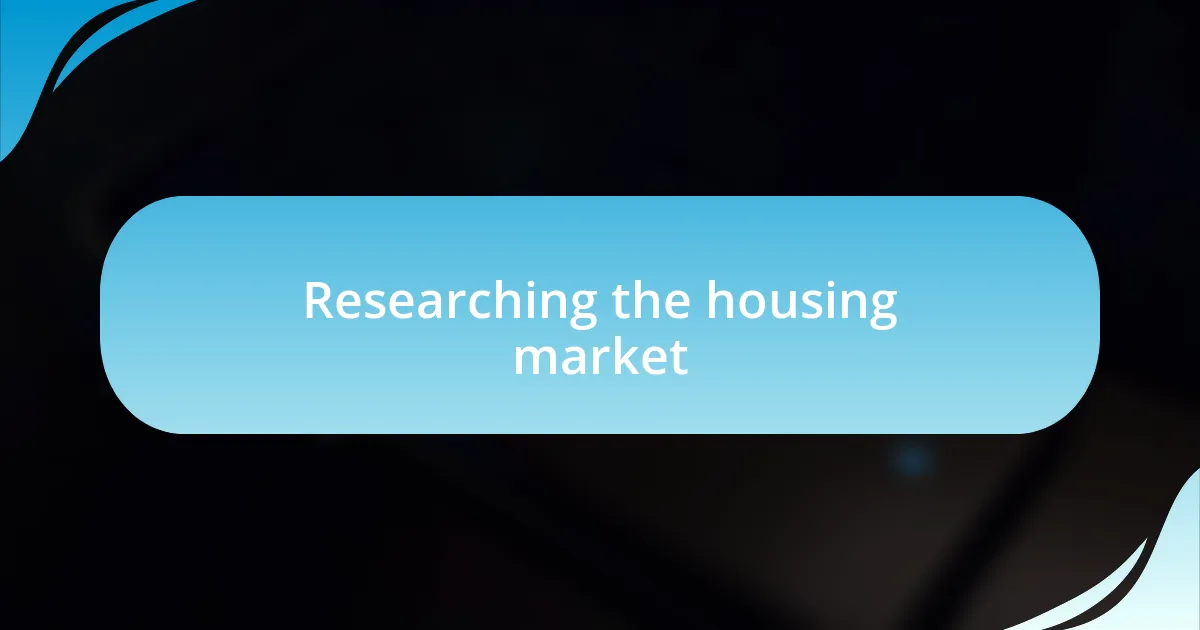
Researching the housing market
Researching the housing market is an essential step that can’t be overlooked. I remember spending countless hours browsing online listings and visiting open houses, like a treasure hunt for the perfect home. The more I researched, the more I understood the nuances of the market, such as the impact of location and timing on pricing.
One of the most eye-opening aspects was learning about the different housing types available in my desired area. For example, I initially focused on single-family homes, but as I explored further, I discovered townhouses and condos that offered appealing amenities and lower maintenance. This exploration broadened my perspective and helped me refine my criteria for what I truly wanted in a home.
As I continued my research, I found it helpful to create a comparison table to visually organize my findings. This not only clarified my preferences but also assisted in identifying potential red flags. Through this process, I gained confidence in my ability to navigate the market, a crucial feeling when making such a significant investment.
| Housing Type | Price Range |
|---|---|
| Single-family Home | $300,000 – $700,000 |
| Townhouse | $250,000 – $500,000 |
| Condo | $200,000 – $400,000 |
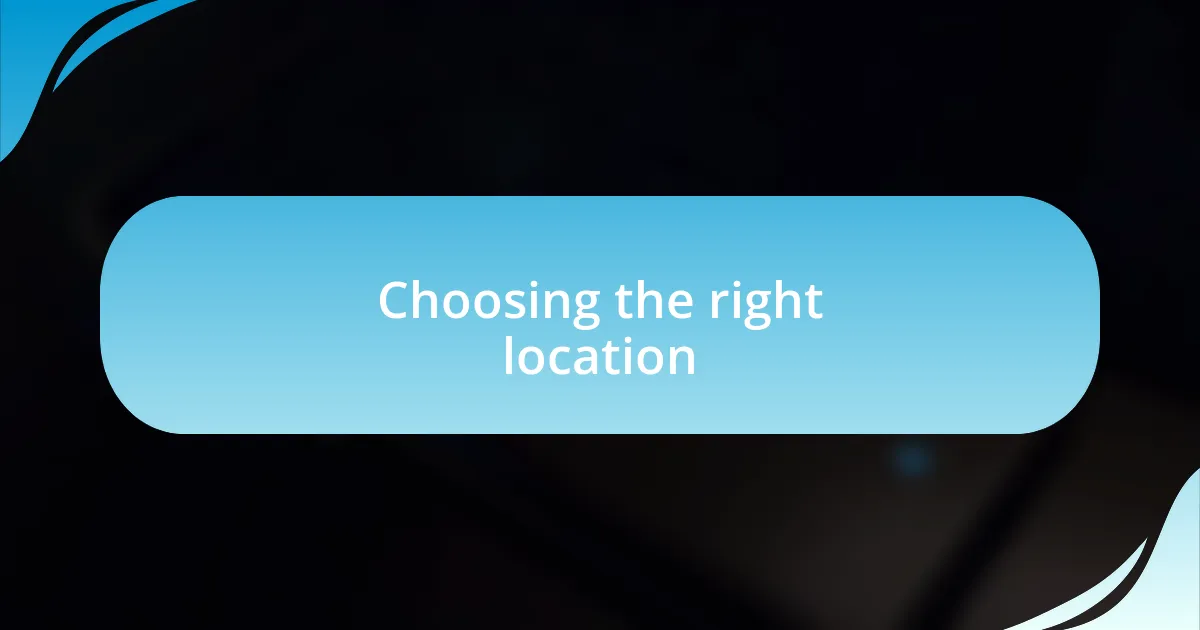
Choosing the right location
Choosing the right location is a pivotal decision in the home-buying journey. I still vividly recall walking through neighborhoods that captured my heart, feeling an instant connection with the streets, parks, and local vibe. It was a reminder that home isn’t just about the house; it’s about the community you’ll become part of.
As I weighed my options, I often asked myself what truly mattered. Was it the commute time to work, access to schools, or the nearby coffee shops? Each factor influenced my emotions and practicality. I remember standing on a corner, sipping coffee, and imagining a life there. It struck me how that sense of belonging could feel like home, long before I made a purchase.
In my experience, visiting at different times, like on a bustling Saturday morning versus a quiet Tuesday evening, revealed a lot about the neighborhood’s personality. I’d hop in my car, driven by curiosity, and welcome the opportunity to experience the area firsthand. Those moments helped clarify my feelings and priorities, guiding me toward the location that just felt right.
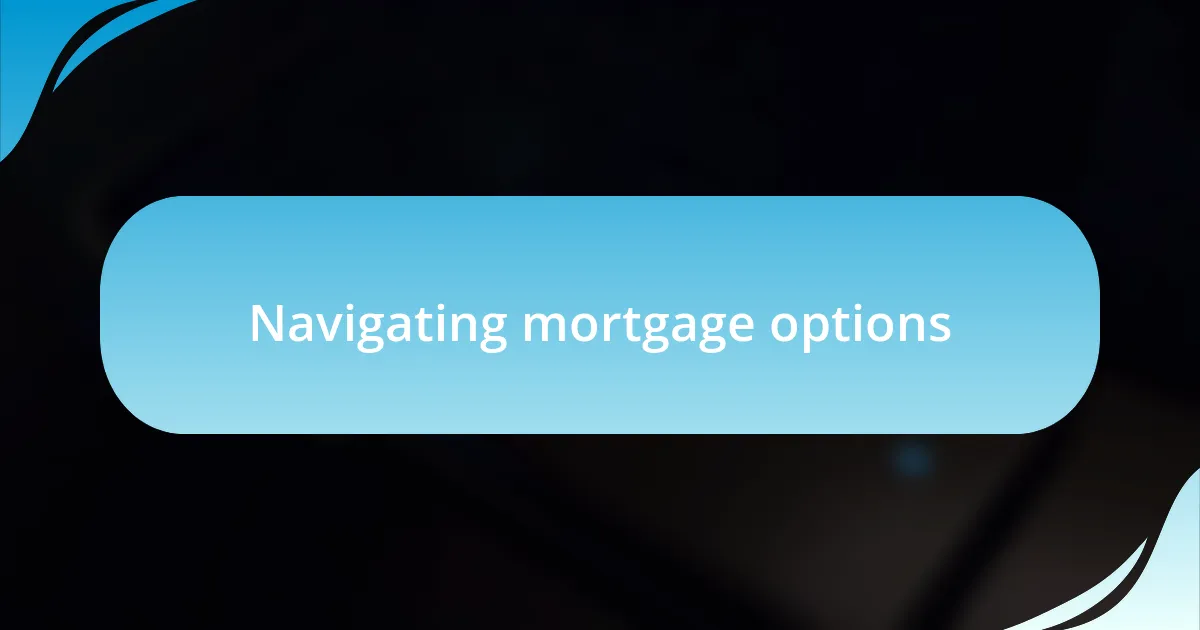
Navigating mortgage options
Navigating mortgage options felt like diving into an ocean of information. I remember sitting at my kitchen table, surrounded by stacks of papers and countless spreadsheets, trying to make sense of terms like “fixed-rate” and “adjustable-rate.” It was overwhelming, but I knew that understanding these options was crucial for my financial future. Do I want consistency in my payments, or am I willing to take a risk for potential savings?
As I explored different lenders, I was struck by how personalized the process could be. Each conversation offered different perspectives on what might work best for my situation. Some lenders were more focused on helping first-time buyers like me, while others seemed more transactional. I remember one particular lender who took the time to explain everything clearly, breaking down the jargon and overall costs, which made me feel like I was making an informed decision rather than just choosing a number.
By comparing quotes and considering the long-term implications of each mortgage option, I learned not only about interest rates but also about how my decisions today would shape my tomorrow. I often asked myself, how much can I comfortably afford? I needed a balance between my dream home and practical finances. This phase was about aligning my aspirations with reality, ensuring that my mortgage was a tool for a brighter future, not a burden.
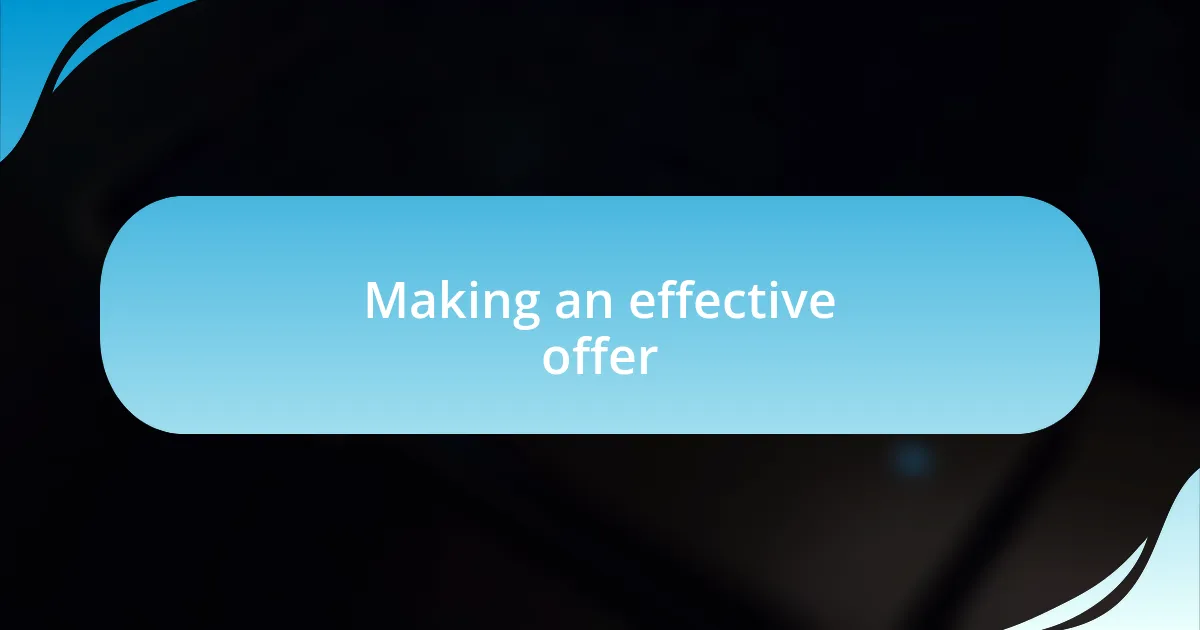
Making an effective offer
Making an effective offer requires careful thought and strategy. When I found my dream home, it wasn’t enough to simply want it; I had to present a compelling offer that would stand out in a competitive market. I remember nervously pacing my living room as I crafted my offer letter. I included personal touches, sharing my vision for the home and how it resonated with my life goals. It’s amazing how a genuine touch can make the seller feel more connected to you.
I also realized that understanding the current market conditions was crucial. Is it a buyer’s or seller’s market? I remember checking online listings and attending open houses, taking notes on how quickly homes were selling. This helped me gauge a reasonable offer. When it came time to submit my bid, I opted for a strategy that balanced my budget with the competitive nature of the local market. It felt like a calculated risk, but I believed in my choice.
During negotiations, I focused on flexibility, offering terms that would appeal to the seller. I asked myself, “What could I include to sweeten the deal?” In my case, I was willing to accommodate a longer closing timeline. This not only showed my seriousness but also demonstrated my willingness to meet the seller’s needs. Ultimately, presenting an effective offer is a balance of understanding the seller’s perspective and confidently advocating for your own needs.
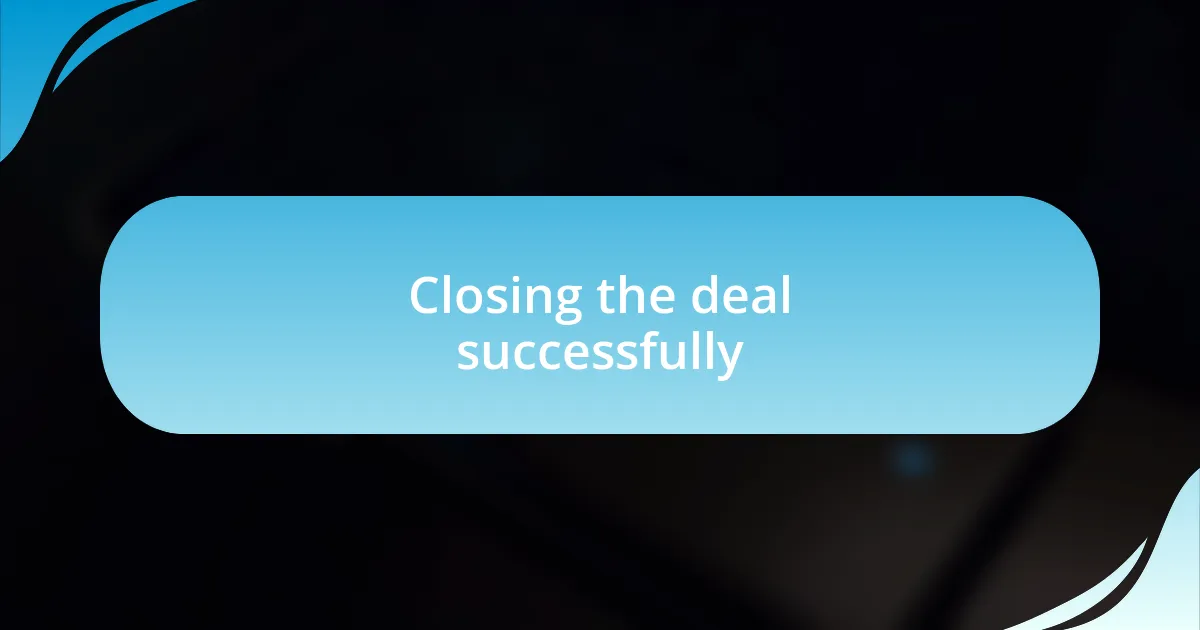
Closing the deal successfully
Closing the deal successfully involves a combination of negotiation skills and a clear understanding of what’s at stake. I recall the moment I sat across from the sellers and their agent, a mix of excitement and anxiety churning in my stomach. It was essential to convey my genuine interest while also maintaining a sense of composure. I wondered, “How can I make them see this is not just a transaction, but a new chapter in my life?”
As the discussions progressed, I found the importance of being prepared to address any concerns they had about my offer. I shared not just my financial capabilities but also my commitment to maintaining the home’s charm. It felt rewarding to foster a relationship built on trust—that I wasn’t just another buyer, but someone who envisioned a future in their beloved home.
When we finally reached the point of agreement, an overwhelming sense of relief washed over me. It struck me that the journey of home buying isn’t simply about numbers; it’s about building connections and finding common ground. I had made sacrifices and compromises, and seeing the seller’s delighted reaction confirmed I had closed the deal the right way, with both sides feeling valued.











